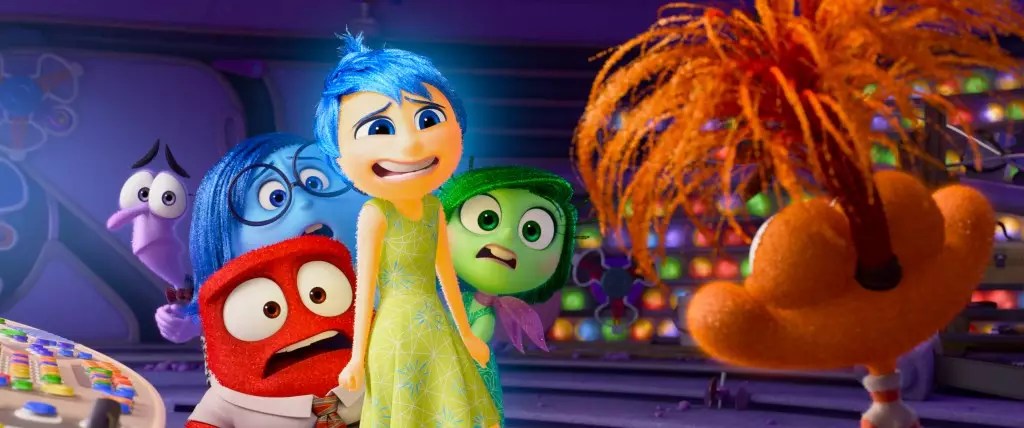It has been almost ten years since the original Inside Out film was released, prompting the need for some animation updates before the sequel, Inside Out 2, could come to fruition. Pixar assembled a team of both seasoned professionals and fresh talent to revamp the world and introduce a new set of emotions to drive the narrative forward in this highly anticipated sequel. Scheduled for release on June 14, 2024, Inside Out 2 delves into the turbulent teenage years of Riley Anderson (Kensington Tallman) as a fresh group of emotions disrupts the delicate balance nurtured by Joy (Amy Poehler) in Riley’s mind.
Rebecca McVeigh, a story artist on the project, highlighted the difficulties and rewards of working on a sequel. She praised the distinctiveness of the original five emotions in Inside Out but acknowledged the pressure to uphold the legacy of a beloved film while bringing something innovative to the table for a new storyline. McVeigh’s sentiments resonated with many team members who faced similar challenges. For example, cinematographer Adam Habib found that revisiting classic techniques while exploring new visual themes was both exhilarating and daunting.
A major obstacle faced by production designer Jason Deamer was the technological advancements that necessitated recreating all characters from scratch. This meant starting anew and striving not only to replicate the original characters but also to enhance their design with improved software capabilities. For instance, Sadness’ sweater was reinvented using sophisticated animation techniques to elevate the visual authenticity of the character. The progression of technology posed a unique challenge but also provided an opportunity for the team to push their creative boundaries.
A pivotal aspect of Inside Out 2 was the introduction of new emotions, most notably Anxiety portrayed by Maya Hawke. The representation of Anxiety posed a significant challenge for animation supervisors Evan Bonifacio and Dovi Anderson. Balancing Anxiety’s frantic nature with relatability and audience engagement required a nuanced approach that extended to the editing process. Editor Maurissa Horwitz disclosed the intricate task of adjusting the rhythm of the film to match the energy and personality of each emotion, particularly Anxiety. Ramping up the pace gradually to avoid overwhelming viewers was a critical editing strategy that enhanced the storytelling and character development.
The multifaceted nature of the new emotions, such as Embarrassment and Envy, demanded a diverse visual and narrative treatment. Each emotion brought a distinctive tempo and mood to the film, challenging the creators to find a harmonious balance that resonated with the audience. While Anxiety exuded jittery energy and rapid movement, other emotions like Envy embodied dreaminess and introspection, calling for varied editing techniques to capture their essence effectively. The dynamic interplay between different emotions added depth and richness to the storytelling, fostering a compelling and immersive viewing experience.
The making of Inside Out 2 was a formidable yet rewarding journey for the creative team involved. Through meticulous attention to detail, technological innovation, and narrative ingenuity, the filmmakers succeeded in crafting a sequel that builds upon the beloved legacy of the original film while venturing into new emotional and visual territories. Inside Out 2 promises to captivate audiences with its nuanced storytelling, vibrant characters, and immersive animation, setting a new standard for animated sequels in the dynamic world of cinema.


Leave a Reply